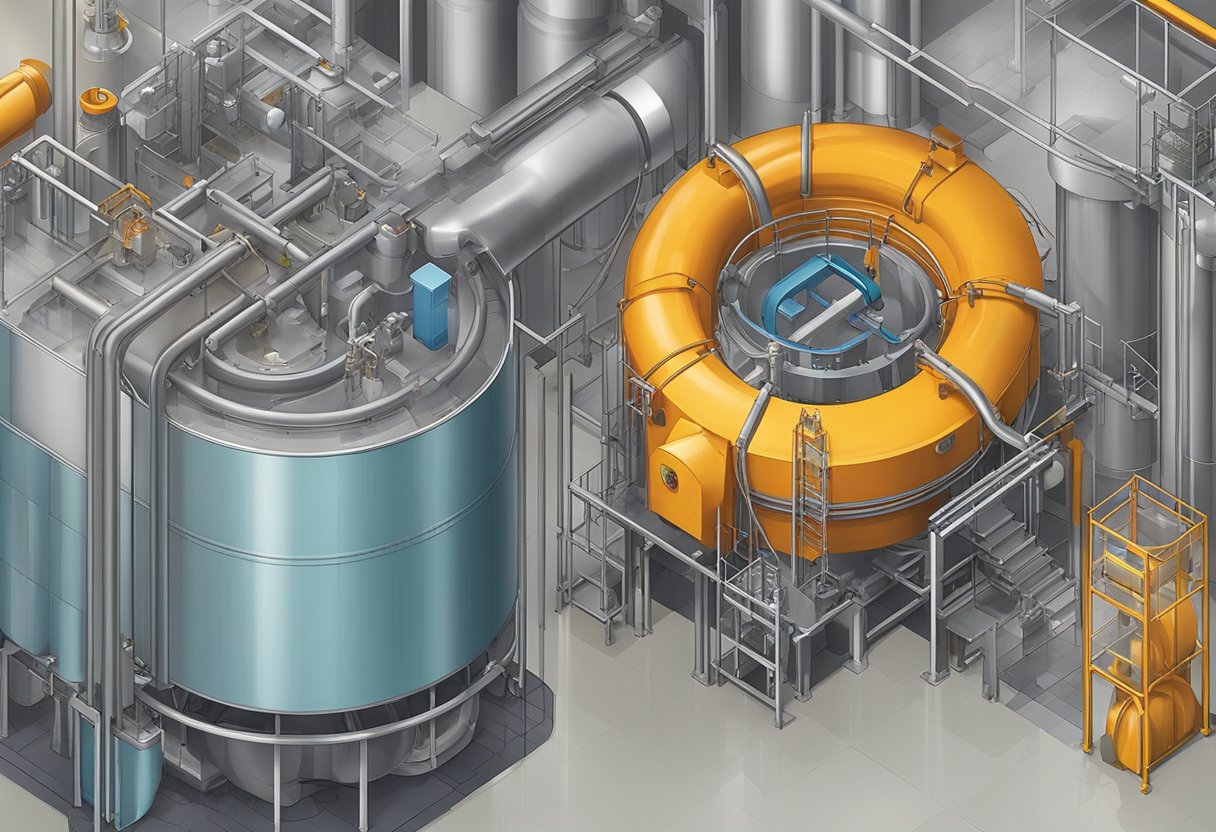Resin C5: Properties, Applications, and Benefits
19/01/2024
Resin C5 is a type of hydrocarbon resin that is widely used in various industrial applications. It is a thermoplastic polymer that is derived from the distillation of crude oil. Resin C5 is known for its excellent compatibility with other materials, which makes it an ideal ingredient in the manufacturing of adhesives, coatings, and printing inks.

One of the key properties of Resin C5 is its ability to improve the tackiness and adhesion of other materials. This makes it a popular choice for use in pressure-sensitive adhesives, such as those used in labels, tapes, and stickers. Resin C5 can also be used to enhance the durability and gloss of coatings, as well as to improve the printability of inks.
Overall, Resin C5 is a versatile material that has a wide range of applications in various industries. Its unique properties make it an essential ingredient in the manufacturing of many products, and its popularity is only expected to grow in the coming years.
Chemical Composition of C5 Resin

C5 resin is a type of hydrocarbon resin that is derived from the polymerization of C5 olefins, which are obtained as a byproduct of the steam cracking process used to produce ethylene and propylene. The chemical composition of C5 resin can vary depending on the specific feedstock used and the manufacturing process employed.
Typically, C5 resin consists of a mixture of aliphatic and aromatic hydrocarbons with a carbon number range of C5-C9. The resin has a low molecular weight and is characterized by its high degree of unsaturation, which makes it highly reactive and suitable for a wide range of applications.
C5 resin is commonly used as a tackifier in adhesives, where it provides excellent adhesion to a variety of substrates. It is also used as a modifier in rubber compounds, where it improves the processability and physical properties of the final product.
In addition, C5 resin is used as a binder in coatings, where it provides excellent compatibility with a variety of solvents and resins. It is also used as a plasticizer in thermoplastic elastomers, where it improves the flexibility and durability of the final product.
Overall, the chemical composition of C5 resin makes it a versatile and valuable material for a wide range of industrial applications.
Production Process of C5 Resin

Feedstock
C5 resin is a petroleum-derived product that is obtained from the distillation of crude oil. The feedstock for C5 resin production is a mixture of light hydrocarbons, mainly pentene and isoprene. These hydrocarbons are obtained from the cracking of naphtha or other heavy fractions of crude oil.
Polymerization Methods
The polymerization of C5 resin is carried out using two main methods: solution polymerization and bulk polymerization. In solution polymerization, the monomers are dissolved in a solvent and then polymerized using a catalyst. The solvent is then removed to obtain the final product. In bulk polymerization, the monomers are heated in the presence of a catalyst to form a solid resin, which is then ground into a powder.
Purification and Finishing
After polymerization, the resin is purified to remove any impurities that may have formed during the process. The purification process involves washing the resin with solvents such as alcohol or water, followed by filtration and drying. The finished product is then packaged and shipped to customers.
Overall, the production process of C5 resin involves the distillation of crude oil to obtain the feedstock, followed by polymerization using either solution or bulk methods. The final product is then purified and finished before being shipped to customers.
Types of C5 Resins

C5 resins are a type of petroleum-based resin that is widely used in various industries due to their excellent adhesive properties. These resins are made from a mixture of aliphatic and aromatic hydrocarbons obtained from the distillation of crude oil. There are three main types of C5 resins: aliphatic resins, aromatic resins, and hydrogenated hydrocarbon resins.
Aliphatic Resins
Aliphatic resins are a type of C5 resin that is primarily composed of aliphatic hydrocarbons. These resins are known for their excellent color stability and resistance to UV radiation. They are commonly used in the production of adhesives, coatings, and sealants.
Aromatic Resins
Aromatic resins are a type of C5 resin that is primarily composed of aromatic hydrocarbons. These resins are known for their excellent tackiness and adhesive properties. They are commonly used in the production of hot melt adhesives, pressure-sensitive adhesives, and rubber compounds.
Hydrogenated Hydrocarbon Resins
Hydrogenated hydrocarbon resins are a type of C5 resin that is produced by hydrogenating the aromatic hydrocarbons present in the resin. This process results in a resin that is more stable and has a higher melting point than other types of C5 resins. These resins are commonly used in the production of hot melt adhesives, coatings, and inks.
Overall, C5 resins are a versatile type of resin that is widely used in various industries. The different types of C5 resins offer unique properties that make them suitable for specific applications.
Properties of C5 Resin
Physical Properties
C5 resin is a thermoplastic resin that is produced through the polymerization of C5 olefins. It is a pale yellow to light brown solid with a low molecular weight. The resin is soluble in a wide range of organic solvents, including aliphatic and aromatic hydrocarbons, esters, ketones, and chlorinated solvents. It has a relatively low melting point of around 80-90°C and a density of approximately 0.9-1.0 g/cm³.
Chemical Resistance
C5 resin exhibits good chemical resistance to a variety of substances, including acids, bases, and alcohols. It is also resistant to water, oils, and greases. However, it is not recommended for use in applications that involve exposure to strong oxidizing agents, such as chlorine or ozone, as it may undergo degradation under these conditions.
Thermal Stability
C5 resin has a relatively low thermal stability, with a decomposition temperature of around 200-250°C. It is not recommended for use in high-temperature applications, as it may undergo thermal degradation under these conditions. However, it can be used at elevated temperatures in applications where the temperature is below its decomposition temperature.
Overall, C5 resin is a versatile material that exhibits good chemical resistance and solubility. Its relatively low melting point and thermal stability make it suitable for use in a wide range of applications, including adhesives, coatings, and printing inks.
Applications of C5 Resin
C5 resin is a versatile material that is widely used in various applications due to its excellent properties. In this section, we will discuss the primary applications of C5 resin and how it is used in different industries.
Adhesives and Sealants
C5 resin is a crucial component in the production of adhesives and sealants. It is used as a tackifier to improve the adhesive properties of the final product. The resin’s low molecular weight and excellent compatibility with other materials make it an ideal choice for adhesive formulations. Additionally, C5 resin is used as a binder in sealants to enhance their adhesion and cohesion properties.
Paints and Coatings
C5 resin is also widely used in the production of paints and coatings. It is used as a co-resin to improve the hardness, gloss, and adhesion properties of the final product. Additionally, C5 resin is used as a tackifier in pressure-sensitive adhesives used in tapes and labels.
Printing Inks
C5 resin is an essential component in the production of printing inks. It is used as a binder to hold the pigments together and provide adhesion to the printing surface. Additionally, the resin’s low viscosity and excellent solubility make it an ideal choice for ink formulations.
Rubber Compounding
C5 resin is also used in rubber compounding to improve the tackiness and adhesion properties of the final product. It is used as a tackifier in natural and synthetic rubber formulations to improve their adhesive properties. Additionally, C5 resin is used as a plasticizer to improve the flexibility of rubber compounds.
In summary, C5 resin is a versatile material that finds applications in various industries. Its excellent properties, such as low molecular weight, compatibility, and solubility, make it an ideal choice for various applications.
Market Trends for C5 Resin
C5 resin is a versatile and widely used material, with applications in various industries such as adhesives, coatings, and rubber. The market for C5 resin is expected to grow steadily in the coming years, driven by several factors.
One of the key drivers of the C 5 resin market is the increasing demand for adhesives and coatings in the construction and automotive industries. C 5 resin is a key ingredient in these products, providing excellent adhesion, flexibility, and durability. As these industries continue to grow, the demand for C 5 resin is expected to increase accordingly.
Another factor driving the C5 resin market is the growing demand for rubber in various applications such as tires, hoses, and seals. C 5 resin is a crucial component in rubber formulations, providing improved processing, adhesion, and tackiness. With the global demand for rubber expected to grow, the demand for C5 resin is also expected to rise.
In addition to these factors, the C 5 resin market is also influenced by the availability and price of raw materials. The main raw material for C 5 resin is crude oil, and any fluctuations in the price of crude oil can have a significant impact on the cost of C 5 resin production. However, with advances in technology and production processes, manufacturers are finding ways to reduce their dependence on crude oil and develop more sustainable and cost-effective production methods.
Overall, the C 5 resin market is expected to continue growing in the coming years, driven by increasing demand from various industries and advancements in production technology.
Environmental and Health Considerations
Regulatory Compliance
Resin C 5 is a widely used material in various industries, including adhesives, coatings, and printing inks. The use of Resin C 5 is regulated by various government agencies, including the Environmental Protection Agency (EPA) and the Occupational Safety and Health Administration (OSHA).
Manufacturers of Resin C 5 are required to comply with regulations set forth by these agencies, including proper labeling, handling, and disposal of the material. These regulations ensure that Resin C5 is used safely and responsibly, minimizing the impact on the environment and human health.
Safety Measures
Resin C 5 can be hazardous if not handled properly. It is important to follow safety measures to prevent exposure to the material. These measures include wearing protective clothing, such as gloves and goggles, and ensuring proper ventilation in the work area.
In case of accidental exposure, it is important to follow proper procedures for cleaning and decontamination. This includes washing the affected area with soap and water and seeking medical attention if necessary.
Overall, Resin C 5 is a valuable material in many industries, but it is important to handle it with care and follow regulatory compliance to ensure the safety of workers and the environment.
Storage and Handling of C 5 Resin
C 5 resin is a valuable material used in various industries such as adhesives, coatings, and printing inks. Proper storage and handling of C 5 resin are crucial to maintain its quality and ensure its effectiveness in the end product.
To begin with, C 5 resin should be stored in a cool, dry, and well-ventilated area away from direct sunlight and sources of heat. Exposure to heat and sunlight can cause the resin to deteriorate and lose its properties. Therefore, it is recommended to store C 5 resin in a temperature-controlled environment between 20-25°C.
Furthermore, it is essential to handle C 5 resin with care to avoid any contamination or damage. The resin should be handled using clean and dry equipment to prevent any foreign particles from entering the material. Additionally, it is advisable to use appropriate personal protective equipment such as gloves, goggles, and a respirator to avoid any direct contact with the resin.
When transferring C 5 resin from one container to another, it is crucial to use a clean and dry transfer system to prevent any contamination. Using a funnel or a transfer pump can help minimize any spills or leaks during the transfer process.
In conclusion, proper storage and handling of resin are essential to maintain its quality and effectiveness. Following the guidelines mentioned above can help ensure the longevity of the resin and prevent any contamination or damage.
Future Outlook for C 5 Resin
C 5 resin is expected to have a positive future outlook with increasing demand from various industries. The global C 5 resin market is projected to grow at a CAGR of 5.4% during the forecast period of 2021-2026.
One of the major factors driving the growth of the C 5 resin market is the increasing demand for adhesives and sealants in various end-use industries such as automotive, construction, and packaging. C 5 resin is widely used in the production of hot-melt adhesives and pressure-sensitive adhesives due to its excellent tackifying properties.
Moreover, the growing demand for C 5 resin in the rubber industry as a tackifier and reinforcing agent is also expected to drive the market growth. C 5 resin is widely used in the production of tires, hoses, belts, and other rubber products due to its excellent compatibility with various elastomers.
The increasing demand for C 5 resin in the Asia-Pacific region, particularly in China and India, is expected to provide significant growth opportunities for the market players. The growth of the automotive and construction industries in these countries is driving the demand for adhesives, sealants, and rubber products, which, in turn, is expected to boost the demand for C 5 resin.
In conclusion, the future outlook for C 5 resin looks promising with increasing demand from various end-use industries. The market players are expected to focus on product innovation and expansion of their production capacities to meet the growing demand for C 5 resin.
Frequently Asked Questions
What are the primary applications of C5 hydrocarbon resins?
C5 hydrocarbon resins are commonly used as tackifiers and modifiers in the production of adhesives, sealants, and coatings. They are also used as binders in the manufacture of rubber compounds and as additives in printing inks and paints.
How do C 5 resins differ from C9 resins in terms of properties and uses?
C5 resins have a lower molecular weight and a lower softening point compared to C9 resins. This makes them more compatible with elastomers and polymers, resulting in better adhesion and tack properties. C9 resins, on the other hand, have a higher softening point and are more commonly used in hot-melt adhesives, asphalt modification, and other applications where high temperature resistance is required.
What industries commonly utilize C5 hydrocarbon resins?
C5 hydrocarbon resins find use in a wide range of industries, including packaging, automotive, construction, and printing. They are also used in the production of personal care products, such as cosmetics and toiletries.
How does the cost of C 5 resin typically fluctuate in the market?
The cost of C 5 resin is influenced by a variety of factors, including supply and demand, feedstock prices, and manufacturing costs. Prices may fluctuate depending on these factors, as well as on the specific grade and quality of the resin.
What factors should be considered when purchasing C 5 resin for industrial use?
When purchasing C 5 resin for industrial use, it is important to consider factors such as the intended application, the required properties of the resin, and the compatibility with other materials in the formulation. Other factors to consider include the quality and consistency of the resin, as well as the supplier’s reputation and reliability.
What are the environmental considerations associated with the use of petroleum hydrocarbon resins?
Petroleum hydrocarbon resins, including C 5 resins, are derived from non-renewable sources and are not biodegradable. As such, they can have a negative impact on the environment if not handled and disposed of properly. However, many resin manufacturers are taking steps to minimize their environmental impact by implementing sustainable practices and developing bio-based alternatives.




